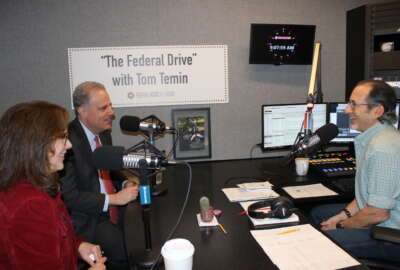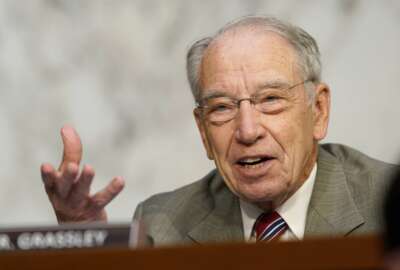By Lisa Wolfe
Program Director
Federal News Radio
The federal workforce is mobile and there is no going back. Agencies are changing their standards, architecture and policies to support working from anywhere at any time with secure access through any device. It’s the new normal.
Federal News Radio, in a special series, “Gov 3.0: It’s Mobile“, pulls specific examples from various agencies’ energy, effort and planning they’ve done to create a secure, device-agnostic mobile IT platform. We reveal the results of our exclusive survey of the status of agencies’ nascent mobile policies and give a soapbox to government and industry leaders to share their thoughts on where mobile government is headed.
Kathleen Frisbee, Veterans Health Administration’s director of Web and Mobile Solutions, deconstructs the success of a mobile use case and explains how the agency made mobile advances that were driven by the demands of VA’s medical workforce.
Earlier this year, Kim Hancher, chief information officer at the Equal Employment Opportunity Commission, reduced the number of BlackBerrys and adopted a bring-your-own-device model. Hancher updates Federal News Radio Executive Editor Jason Miller on his weekly Ask the CIO program Thursday at 10:30 a.m. on the savings created and what mobile looks like at EEOC in the future.
Mark Goodge, the chief technology officer at the Military Heath System, writes in his column about one of the ways a particular mobile technology, mobile bar coding, actually is saving lives.
Advances in mobility are happening quickly, but not without the watchfulness and recommendations of experts in both government and industry. And there are more issues to govern than what smartphone to purchase.
ACT-IAC’s Advance Mobility Working Group has identified eight areas requiring leadership and collaboration. The eight projects address challenges of feds who work in the field such as first responders, inspectors and law enforcement; BYOD best practices; regulatory reviews of laws and policies that are counterproductive to more aggressive commercial mobile adoption; new laws needed to streamline adoption of apps; developing mobile community of practice; and reviewing and recommending changes to the Federal Mobility Strategy.
Rick Holgate, the chairman of the ACT-IAC Advanced Mobility Working Group (AMWG) and CIO at the Bureau of Alcohol, Tobacco, Firearms and Explosives, writes in his column, in the six months since the release of “Building a 21st Century Digital Government,” “The spirit of collaboration is evident in the Technical Exchange Meetings (TEMs) hosted by the National Institute of Standards and Technology (NIST), to foster governmentwide sharing of mobile security-related information, experiences and expertise. We also see progress on the acquisition of common mobile platforms and services through recent efforts to acquire MDM and mobile application store (MAS) services at the Defense Information Systems Agency (DISA) and the General Services Administration (GSA), among others.”
Holgate and Sanjay Sardar, CIO at the Federal Energy Regulatory Commission and AMWG’s Project Lead responsible for developing a mobile community of practice, join Tom Temin and Emily Kopp on The Federal Drive Friday at 9 a.m. to explain a few of the challenges they’ve encountered as they tackle the massive culture shift to mobile.
And Lisa Mascolo, CEO of Optimos, an enterprise IT company, joins Francis Rose on Industry Chatter Thursday at 3 p.m. with her views on mobile technology trends for the future.
There still are plenty of outstanding questions about mobile computing, including those around security, privacy and whether the government will reimburse employees under BYOD. But the fact is, most agencies are jumping in with both feet because their employees and the citizens expect it.
MORE FROM SPECIAL REPORT, GOV 3.0: IT’S MOBILE
Mobile-minded CIOs point to importance of business case
Mobile computing fuels Arlington Cemetery modernization
VA’s mobile projects put iPads in hands of doctors – and patients
Column: Confessions of a BlackBerry lover
Column: With foundation for federal mobility in place, time to take on next set of challenges
Industry Chatter: Optimos CEO Lisa Mascolo on the mobile future
Budget pressures force EEOC to shift gears
MHS takes cautious, yet innovative, approach to mobile health initiatives
The New Fed: Superhero or 24/7 puppet?
Mobile Strategy by agency
Gov 3.0: It’s Mobile
Copyright
© 2024 Federal News Network. All rights reserved. This website is not intended for users located within the European Economic Area.




